
Handschuhsheim: Heidelberg's Historical Gem
Discover the historical charm and vibrant local culture of Handschuhsheim, a picturesque neighborhood in Heidelberg, Germany, perfect for history buffs and nature lovers.
Nestled in the northern part of Heidelberg, Handschuhsheim is a charming neighborhood that seamlessly blends history, culture, and natural beauty. Known for its traditional half-timbered houses and cobblestone streets, this area offers a picturesque glimpse into Germany's past. As you wander through its narrow lanes, you will encounter architectural marvels dating back to the medieval times, including the St. Vitus Church, which dates back to the 12th century. Handschuhsheim is not just about ancient history; it also boasts a vibrant local culture. The neighborhood is home to quaint cafes, authentic German restaurants, and lively beer gardens where you can enjoy regional delicacies and local brews. The weekly farmers' market at Tiefburg Castle is a must-visit for fresh produce and handmade crafts, providing a taste of local life. Nature lovers will find Handschuhsheim equally appealing. The nearby Odenwald Forest offers numerous hiking and biking trails, perfect for a day of exploration. The serene Philosopher's Walk provides stunning views of the Neckar River and Heidelberg's iconic castle, making it a favorite spot for both tourists and locals alike.
Local tips in Handschuhsheim
- Visit the weekly farmers' market at Tiefburg Castle for fresh local produce and handmade crafts.
- Explore the St. Vitus Church to marvel at its medieval architecture and historical significance.
- Take a stroll along the Philosopher's Walk for breathtaking views of the Neckar River and Heidelberg Castle.
- Try local German dishes at one of Handschuhsheim's traditional cafes or beer gardens.
- Bring comfortable walking shoes to explore the neighborhood's cobblestone streets and nearby hiking trails.
Handschuhsheim: Heidelberg's Historical Gem
Nestled in the northern part of Heidelberg, Handschuhsheim is a charming neighborhood that seamlessly blends history, culture, and natural beauty. Known for its traditional half-timbered houses and cobblestone streets, this area offers a picturesque glimpse into Germany's past. As you wander through its narrow lanes, you will encounter architectural marvels dating back to the medieval times, including the St. Vitus Church, which dates back to the 12th century. Handschuhsheim is not just about ancient history; it also boasts a vibrant local culture. The neighborhood is home to quaint cafes, authentic German restaurants, and lively beer gardens where you can enjoy regional delicacies and local brews. The weekly farmers' market at Tiefburg Castle is a must-visit for fresh produce and handmade crafts, providing a taste of local life. Nature lovers will find Handschuhsheim equally appealing. The nearby Odenwald Forest offers numerous hiking and biking trails, perfect for a day of exploration. The serene Philosopher's Walk provides stunning views of the Neckar River and Heidelberg's iconic castle, making it a favorite spot for both tourists and locals alike.
Iconic landmarks you can’t miss
Philosophers' Way
Discover the breathtaking views and rich history along the Philosophers' Way in Heidelberg, a serene path perfect for reflection and relaxation.
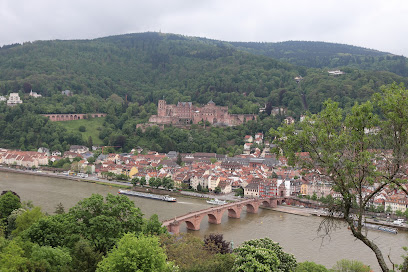
Heiligenberganlage - Thingstätte
Discover the historic Heiligenberganlage in Heidelberg, where scenic hikes meet rich cultural heritage amid breathtaking views.
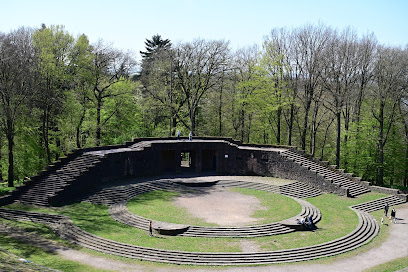
Michaelskloster Heiligenberg
Explore the historic ruins of Michaelskloster Heiligenberg in Heidelberg, a serene blend of nature and medieval architecture with stunning views.
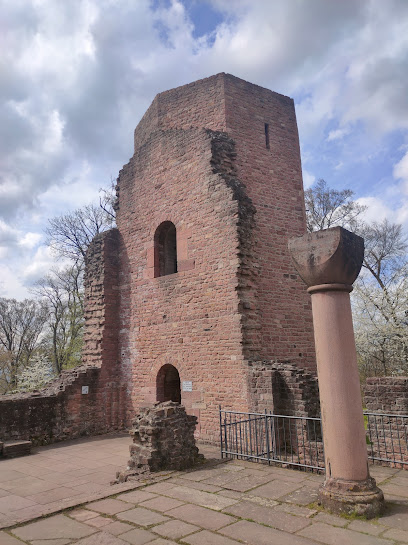
Handschuhsheim, Tiefburg
Explore the captivating history and stunning architecture of Tiefburg, a must-visit historical landmark in Handschuhsheim, Heidelberg.
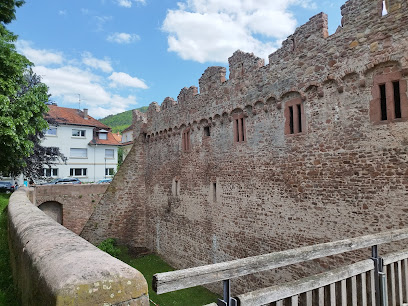
Heidenloch
Discover the historical richness and stunning views at Heidenloch, a must-visit attraction on the Heiligenberg in Heidelberg.
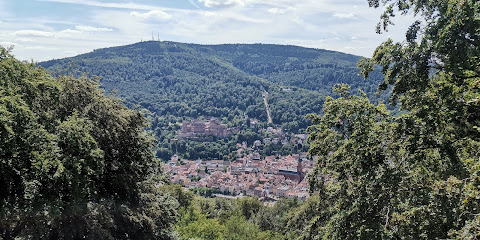
Holdermanns-Eiche
Discover the majestic Holdermanns-Eiche in Heidelberg, an iconic oak tree steeped in history and surrounded by picturesque landscapes.

Tor Innerer Ringwall
Experience the historic charm and scenic beauty of Tor Innerer Ringwall in Heidelberg, where history and nature unite in a breathtaking landscape.
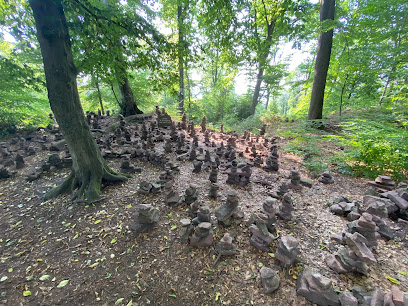
Buchbrunnen
Explore Buchbrunnen, Heidelberg's serene fountain oasis, where history meets nature in a picturesque setting.
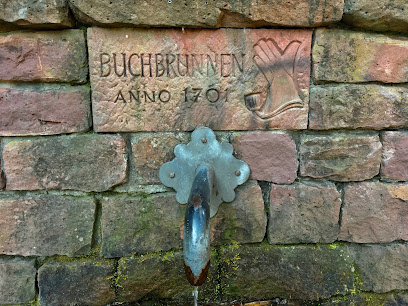
Wasserbrunnen Handschusheim
Explore the serene Wasserbrunnen Handschusheim, a peaceful tourist attraction in Heidelberg, perfect for nature lovers and tranquility seekers.

Gadde
Discover Gadde, a tranquil garden in Heidelberg offering lush landscapes and peaceful retreats for nature lovers and tourists alike.

Unmissable attractions to see
Heidelberg Palace
Discover the enchanting Heidelberg Palace, a historical gem with stunning views, rich heritage, and captivating architecture in the heart of Germany.
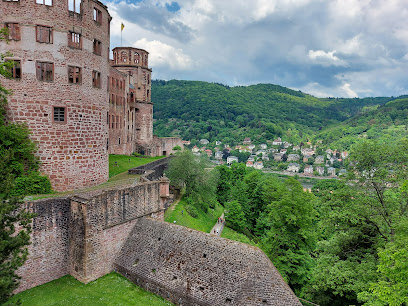
Old Bridge Heidelberg
Discover the historic charm of Heidelberg's Old Bridge, a stunning landmark blending architectural beauty with breathtaking views along the Neckar River.
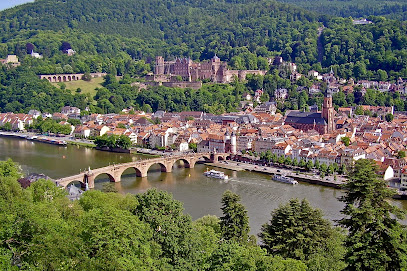
Philosophers' Way
Discover the Philosophers' Way in Heidelberg: a breathtaking trail of history, nature, and philosophical inspiration.
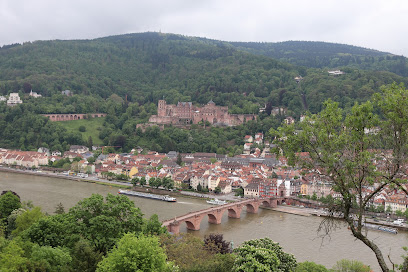
Heiligenberganlage - Thingstätte
Explore the breathtaking Heiligenberganlage - Thingstätte in Heidelberg, a unique blend of history and nature perfect for hiking and sightseeing.
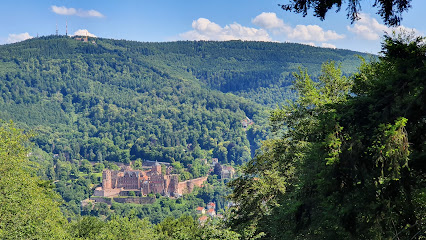
Kurpfälzisches Museum
Explore the rich cultural heritage and stunning art collections at the Kurpfälzisches Museum, a must-visit in Heidelberg, Germany.

Handschuhsheim, Tiefburg
Discover the enchanting medieval fortress of Tiefburg in Handschuhsheim, a historical landmark offering breathtaking views and rich heritage in Heidelberg.
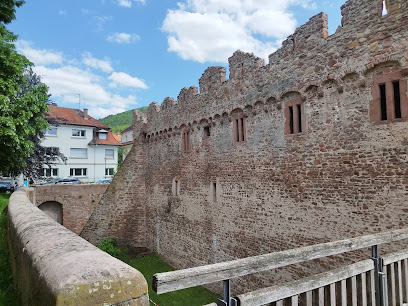
Liebesstein
Experience the breathtaking views and cultural richness of Liebesstein, a scenic tourist attraction overlooking the Neckar River in Heidelberg.
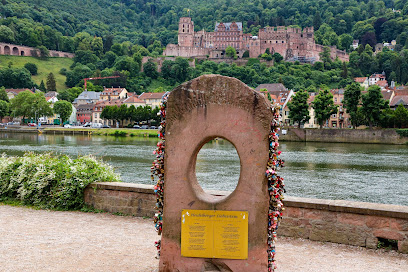
Heidenloch
Discover the historical essence of Heidelberg at Heidenloch, where ancient ruins meet stunning landscapes in a captivating setting.
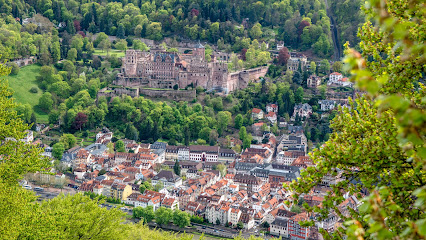
Musengaul
Explore the charm of Musengaul in Heidelberg, a captivating tourist attraction rich in history and stunning landscapes waiting to be discovered.
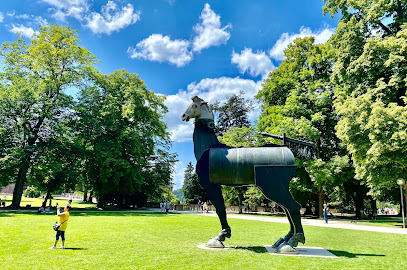
Tor Innerer Ringwall
Experience the breathtaking views and rich history at Tor Innerer Ringwall in Heidelberg, a must-visit tourist attraction in Germany.
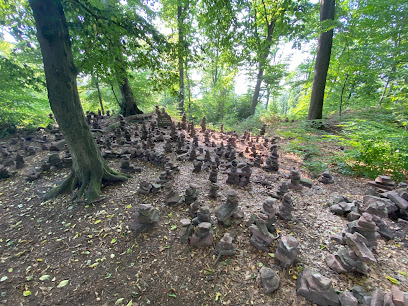
Essential places to dine
Alt Hendesse
Discover authentic German flavors at Alt Hendesse in Heidelberg - where tradition meets taste in a cozy setting.
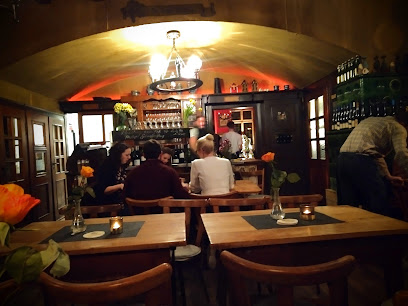
WILD & WEIN Schützenhaus Handschuhsheim
Discover authentic German cuisine paired with exquisite wines at WILD & WEIN Schützenhaus in the charming district of Handschuhsheim.
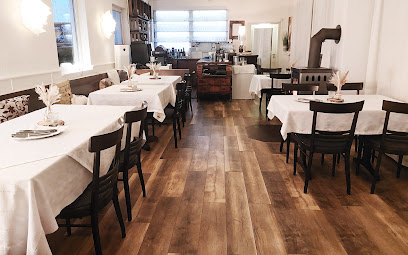
Olive
Discover Olive in Heidelberg: A Mediterranean gem offering authentic cuisine in a charming atmosphere perfect for every food lover.
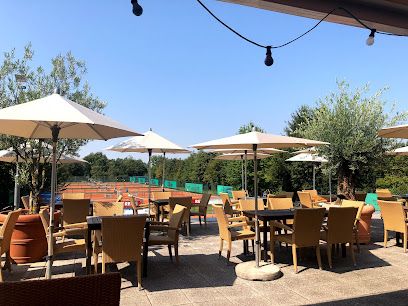
La Locanda 26
Experience authentic Italian cuisine at La Locanda 26 in Heidelberg, where delicious pizzas and traditional dishes await every traveler.
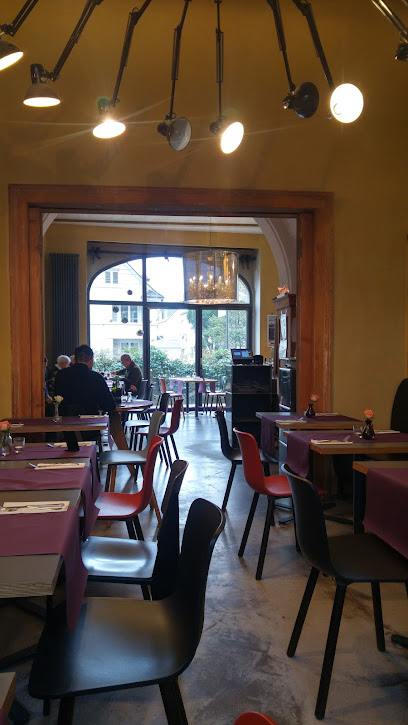
Zum Ritter - La Cucina Veneta
Delight in authentic Northern Italian cuisine at Zum Ritter - La Cucina Veneta in Heidelberg, where every meal tells a story.
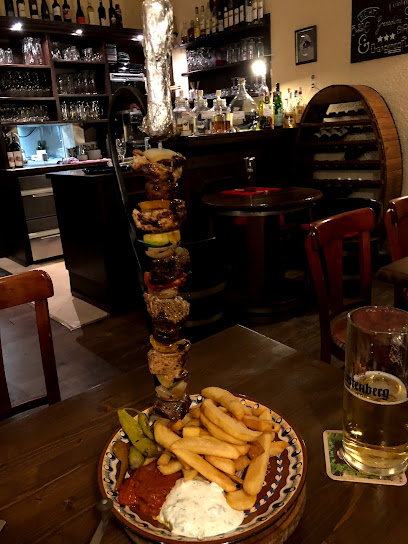
[CANTINACCIA]
Experience authentic Italian cuisine at Cantinaccia in Heidelberg - where tradition meets flavor in every dish.
![[CANTINACCIA]](https://evendo-location-media.s3.amazonaws.com/RestaurantImages/69694b9b-1a79-4bae-bca2-1fde283ce97c)
Gaststätte Züchterklause Handschuhsheim
Discover traditional German flavors at Züchterklause Handschuhsheim - where hearty meals meet warm hospitality in the heart of Heidelberg.
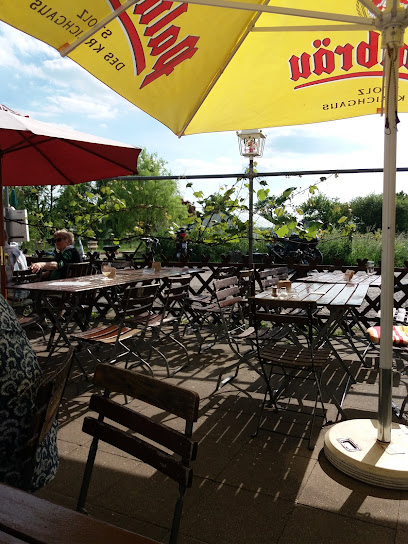
Gilberts Goldener Adler
Experience authentic German cuisine at Gilberts Goldener Adler in Heidelberg's charming Handschuhsheim district.
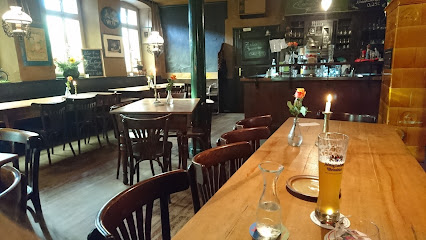
Restaurant Khomli - Heidelberg
Experience authentic Georgian cuisine in Heidelberg at Restaurant Khomli with delightful dishes and a charming beer garden atmosphere.
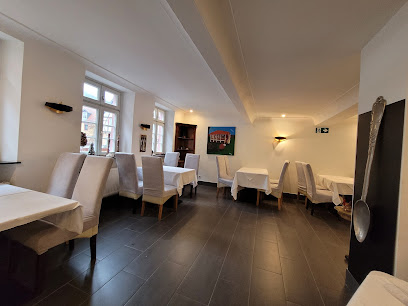
Ai Portici
Experience exquisite Italian dining at Ai Portici in Heidelberg; indulge in authentic cuisine paired with exceptional wines for an unforgettable culinary journey.

Markets, malls and hidden boutiques
Galeria Kaufhof Heidelberg Hauptstraße
Discover a delightful shopping experience at Galeria Kaufhof Heidelberg, where fashion meets tradition in a charming setting.
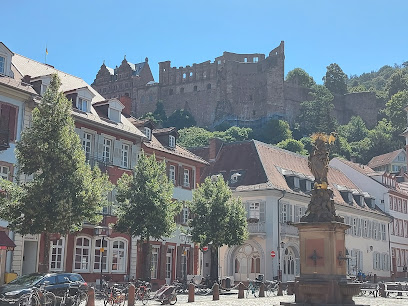
Käthe Wohlfahrt Heidelberg
Discover the magic of Christmas year-round at Käthe Wohlfahrt in Heidelberg, where every corner brings holiday cheer and unique treasures.
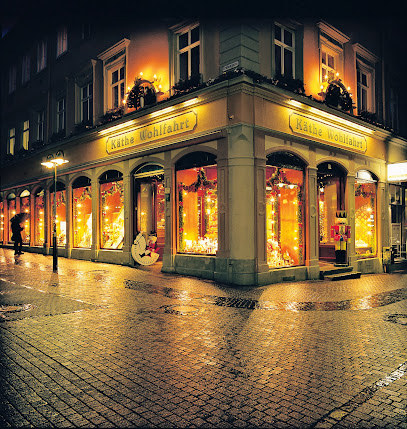
Modehaus Niebel
Discover Heidelberg's Modehaus Niebel for a stylish selection of clothing and accessories, catering to all ages and tastes in a charming shopping atmosphere.
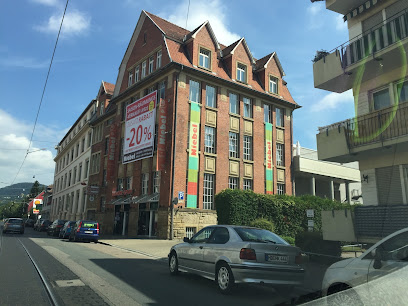
l'Armadio
Explore sustainable fashion at l'Armadio, Heidelberg's premier used clothing store offering unique and stylish finds for every taste.

GOODsHOUSE Heidelberg
Explore GOODsHOUSE Heidelberg for a unique shopping experience featuring fashion, home goods, and eco-friendly products in a charming atmosphere.
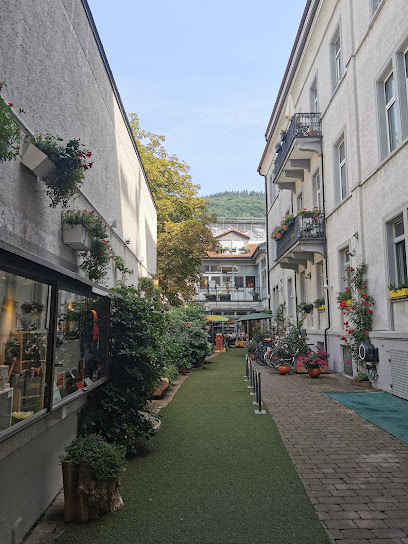
Close Up GmbH
Explore Close Up GmbH in Heidelberg for unique gifts, figurines, posters, and T-shirts that capture the city's artistic essence.

Unishop der Universität Heidelberg
Explore the Unishop der Universität Heidelberg for unique gifts, local crafts, and stylish clothing in the heart of this historic city.
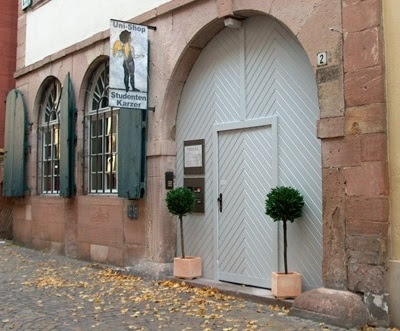
eiei 4 Souvenirs | Heidelberg
Discover Heidelberg's charm at eiei 4 Souvenirs, your go-to shop for unique gifts, stylish clothing, and travel essentials.
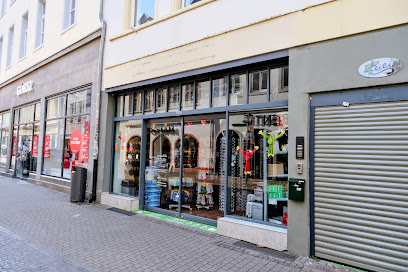
Andenken&Mitbringsel
Discover unique souvenirs and exquisite gifts at Andenken&Mitbringsel, Heidelberg's delightful boutique gift shop in the historic Altstadt.
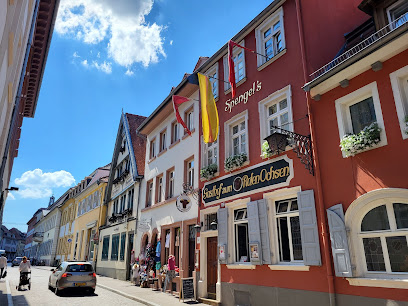
UNICORN Heidelberg
Discover unique souvenirs, fashion accessories, and local wines at UNICORN Heidelberg, the perfect destination for memorable keepsakes.
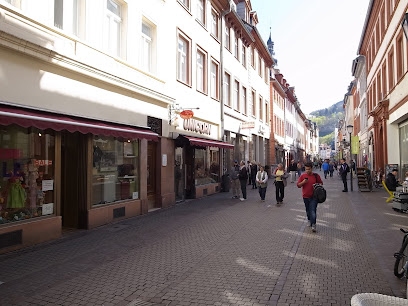
Essential bars & hidden hideouts
Vetter's Alt Heidelberger Brauhaus
Discover Vetter's Alt Heidelberger Brauhaus, Heidelberg's premier brewery-restaurant, serving authentic German cuisine and exceptional craft beers.
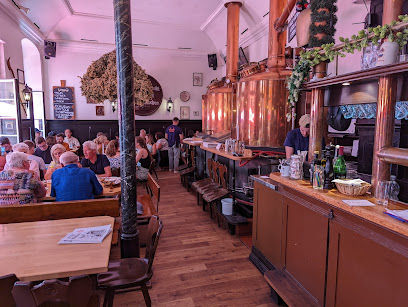
Hemingway's Heidelberg
Discover the charm of Hemingway's Heidelberg, where vibrant nightlife meets delightful dining in the heart of the Old Town.
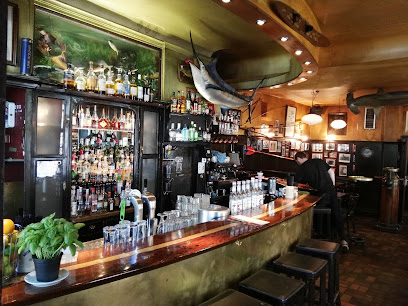
Waldschenke Heidelberg Gasthaus mit Biergarten
Experience the beauty of Heidelberg at Waldschenke, a charming beer garden offering delicious German cuisine and stunning views on the Holy Mountain.
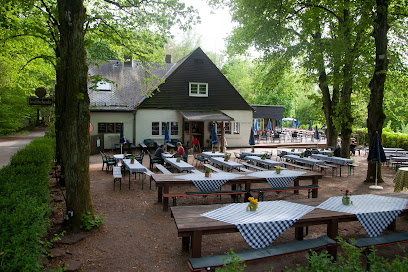
WILD & WEIN Schützenhaus Handschuhsheim
Experience the charm of local German cuisine at WILD & WEIN Schützenhaus in Handschuhsheim, Heidelberg, where every meal tells a story.
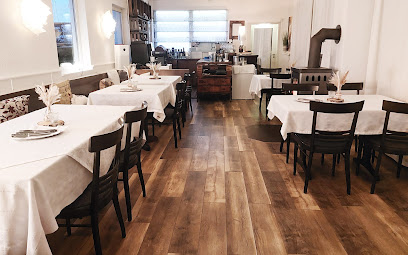
Gaststätte Züchterklause Handschuhsheim
Experience authentic German cuisine in the heart of Heidelberg at Gaststätte Züchterklause, where tradition meets delightful flavors.
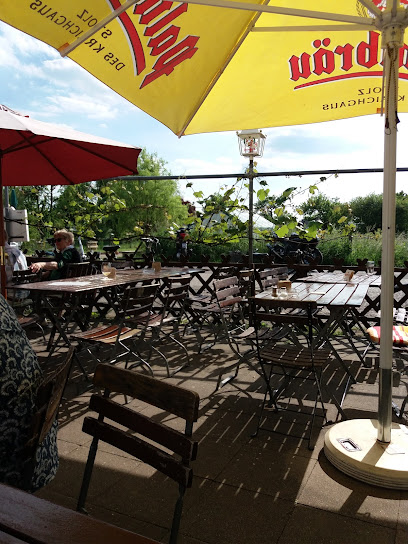
Bar d'Aix en provence
Discover the charming Bar d'Aix en Provence in Heidelberg, where cozy ambiance meets delightful drinks and local flavors.
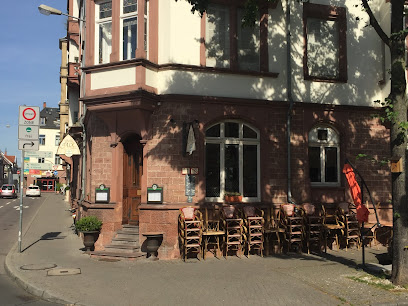
Bairro, Café - Bar
Experience the vibrant atmosphere of Bairro Café - Bar in Heidelberg, where delightful drinks and local culture blend seamlessly for an unforgettable visit.

Frollein Bent
Discover the charm of Frollein Bent, a cozy bar in the heart of Heidelberg's Old Town, perfect for unwinding after a day of exploration.
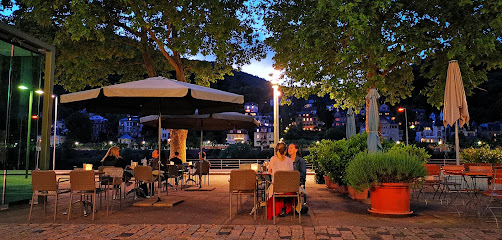
Lenox Bar
Discover Lenox Bar, a gem in Heidelberg's Altstadt, offering a cozy atmosphere, exquisite drinks, and a lively vibe perfect for unwinding.
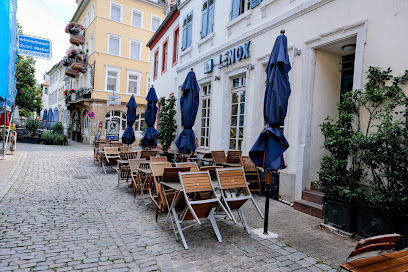
WINE`s Bar, Bistro & more
Discover the perfect blend of exquisite wines and culinary delights at WINE's Bar, Bistro & More, a must-visit spot in Heidelberg's charming Old Town.
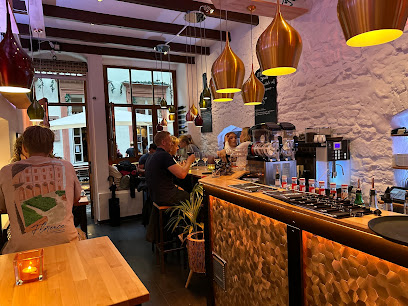
Local Phrases
-
- HelloHallo
[HAH-loh] - GoodbyeAuf Wiedersehen
[owf VEE-der-zay-en] - YesJa
[yah] - NoNein
[nine] - Please/You're welcomeBitte
[BIT-teh] - Thank youDanke
[DAN-keh] - Excuse me/SorryEntschuldigung
[ent-SHOOL-di-goong] - How are you?Wie geht es dir?
[vee gayt es deer] - Fine. And you?Gut. Und dir?
[goot oond deer] - Do you speak English?Sprechen Sie Englisch?
[SHPRE-khen zee ENG-lish] - I don't understandIch verstehe nicht
[ikh fer-SHTAY-e nikht]
- HelloHallo
-
- I'd like to see the menu, pleaseIch möchte die Speisekarte sehen, bitte
[ikh merkhte dee SPY-ze-kar-teh zay-en, BIT-teh] - I don't eat meatIch esse kein Fleisch
[ikh ESS-eh kine flysh] - Cheers!Prost!
[prohst] - I would like to pay, pleaseIch möchte bitte bezahlen
[ikh merkhte BIT-teh be-TSAH-len]
- I'd like to see the menu, pleaseIch möchte die Speisekarte sehen, bitte
-
- Help!Hilfe!
[HIL-feh] - Go away!Gehen Sie weg!
[GAY-en zee vekh] - Call the Police!Rufen Sie die Polizei!
[ROO-fen zee dee po-lee-TSY] - Call a doctor!Rufen Sie einen Arzt!
[ROO-fen zee EYE-nen artsht] - I'm lostIch habe mich verlaufen
[ikh HAH-beh meesh fer-low-fen] - I'm illMir ist schlecht
[meer ist shlekht]
- Help!Hilfe!
-
- I'd like to buy...Ich möchte ... kaufen
[ikh merkhte ... KOW-fen] - I'm just lookingIch schaue nur
[ikh SHOW-eh noor] - How much is it?Wie viel kostet es?
[vee feel KOSS-tet es] - That's too expensiveDas ist zu teuer
[dahs ist tsoo TOO-er] - Can you lower the price?Können Sie den Preis senken?
[KERN-en zee den prees ZEN-ken]
- I'd like to buy...Ich möchte ... kaufen
-
- What time is it?Wie spät ist es?
[vee SHPET ist es] - It's one o'clockEs ist ein Uhr
[es ist iyn oor] - Half past (10)Halb elf
[halb elf] - MorningMorgen
[MOHR-gen] - AfternoonNachmittag
[NAKH-mit-tahk] - EveningAbend
[AH-bent] - YesterdayGestern
[ges-tern] - TodayHeute
[HOI-teh] - TomorrowMorgen
[MOHR-gen] - 1Eins
[eyns] - 2Zwei
[tsvay] - 3Drei
[drey] - 4Vier
[feer] - 5Fünf
[foonf] - 6Sechs
[zeks] - 7Sieben
[zee-ben] - 8Acht
[akht] - 9Neun
[noyn] - 10Zehn
[tsayn]
- What time is it?Wie spät ist es?
-
- Where's a/the...?Wo ist ein/der...?
[vo ist iyn/dehr] - What's the address?Was ist die Adresse?
[vas ist dee ah-dreh-suh] - Can you show me (on the map)?Können Sie es mir zeigen (auf der Karte)?
[KERN-en zee es meer tsai-gen (owf dehr KAR-teh)] - When's the next (bus)?Wann kommt der nächste (Bus)?
[vahn komt dehr nehkhs-teh (boos)] - A ticket (to ....)Eine Fahrkarte (nach ...)
[ey-nuh fahr-kar-teh (nakh)]
- Where's a/the...?Wo ist ein/der...?
History of Handschuhsheim
-
Handschuhsheim’s history can be traced back to the Roman Empire, with evidence of settlements in the area from the first century AD. The name 'Handschuhsheim' is believed to derive from the Old High German term for 'glove home,' indicating a possible connection to glove-making crafts that were prevalent in the region. The village developed gradually, becoming a part of the larger Heidelberg area.
-
In the late Middle Ages, Handschuhsheim became part of the Electoral Palatinate, a significant territorial duchy. This integration fostered economic growth and cultural exchanges, as the area benefited from the stability brought by the Palatinate's governance. The village's proximity to Heidelberg allowed it to flourish as a quaint agricultural community while maintaining a close connection with the university town.
-
The Thirty Years' War (1618-1648) had a profound impact on Handschuhsheim, as it did throughout Germany. The village was affected by military actions and a substantial decline in population due to war-related hardships. Rebuilding efforts took place in the following decades, as the local economy gradually recovered. This period also saw an increase in the local population as refugees from war-torn areas sought shelter and stability.
-
The 19th century marked a significant transformation for Handschuhsheim as it began to urbanize, especially in the wake of industrialization. The village became increasingly integrated with Heidelberg, facilitating the expansion of infrastructure such as roads and railways. This development led to a growing population and the establishment of new businesses and services, further intertwining Handschuhsheim’s identity with that of Heidelberg.
-
During World War II, Handschuhsheim, like much of Germany, faced challenges including air raids and a strained economy. Post-war reconstruction efforts were significant, with the village seeing an influx of displaced persons. This period of rebuilding not only restored the physical structures but also revitalized the community spirit. Handschuhsheim’s integration into the thriving educational and cultural landscape of Heidelberg continued to shape its identity.
-
Today, Handschuhsheim is recognized for its historical significance and picturesque landscapes. The area features charming half-timbered houses, narrow streets, and the historic St. Vitus Church, dating back to the 12th century. The neighborhood's cultural heritage is preserved through local festivals, art exhibitions, and community events, which celebrate its rich history while fostering a vibrant contemporary community within the context of Heidelberg.
Handschuhsheim Essentials
-
Handschuhsheim is easily accessible from other neighbourhoods in Heidelberg. The area is well-connected by public transport. From the city center (Bismarckplatz), you can take tram line 5 towards Handschuhsheim. The journey takes approximately 15 minutes. Alternatively, local buses (lines 34 and 35) also serve the area, providing convenient access from various parts of Heidelberg.
-
Handschuhsheim is a compact neighbourhood, making it easy to explore on foot or by bicycle. The local transport network includes trams and buses, which are efficient for reaching nearby areas. Bicycles can be rented through various services in Heidelberg, and bike lanes are available, making cycling a popular and safe option. Taxis are also available for those who prefer a more direct mode of transport.
-
Handschuhsheim is generally a safe neighbourhood for tourists. However, standard precautions should be taken, such as avoiding poorly lit areas at night and keeping an eye on personal belongings in crowded places. While there are no specific high-crime areas in Handschuhsheim, it is advisable to be cautious in areas with fewer people, particularly after dark.
-
In case of an emergency, dial 112 for immediate assistance in Germany. The local police station is located nearby, and there are several medical facilities in Heidelberg, including hospitals and urgent care centers. It is recommended to have travel insurance that covers medical emergencies. For minor health issues, pharmacies are available where you can purchase over-the-counter medications.
-
Fashion: Do dress respectfully, especially when visiting religious sites or during formal occasions. Avoid overly casual or revealing clothing. Religion: Do respect local customs and traditions, especially in places of worship. Public Transport: Do be polite and give up your seat for elderly passengers. Don't eat or drink on public transport. Greetings: Do greet locals with a friendly 'Hallo' or a handshake. Eating & Drinking: Do try local dishes and beverages, and accept invitations to eat when offered. Don't waste food or show a lack of appreciation for what is served.
-
To experience Handschuhsheim like a local, visit the local markets for fresh produce and regional specialties. Engage with the locals, as they are often welcoming and can share insights about the neighbourhood's history and culture. Take a stroll along the Neckar River for picturesque views and enjoy the parks, such as the Handschuhsheimer Wald, which offer excellent hiking trails. Don't forget to try local wines at the nearby vineyards, as the region is known for its excellent Riesling.
Nearby Cities to Handschuhsheim
-
Things To Do in Frankfurt
-
Things To Do in Stuttgart
-
Things To Do in Wurzburg
-
Things To Do in Rothenburg ob der Tauber
-
Things To Do in Strasbourg
-
Things To Do in Koblenz
-
Things To Do in Grevenmacher
-
Things To Do in Remich
-
Things To Do in Echternach
-
Things To Do in Freiburg
-
Things To Do in Nuremberg
-
Things To Do in Colmar
-
Things To Do in Bonn
-
Things To Do in Luxembourg City
-
Things To Do in Vianden










